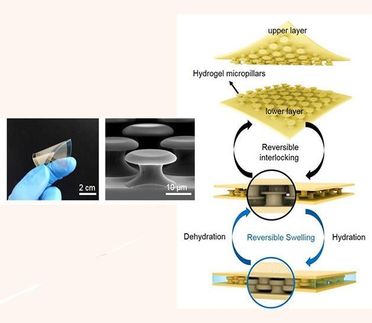Dramatic improvement in surface finishing of 3-D printing
Waseda University researchers have developed a process to dramatically improve the quality of 3D printed resin products. The process combines greatly improved surface texture and higher structural rigidity with lower cost, less complexity, safer use of solvent chemicals and elimination of troublesome waste dust.
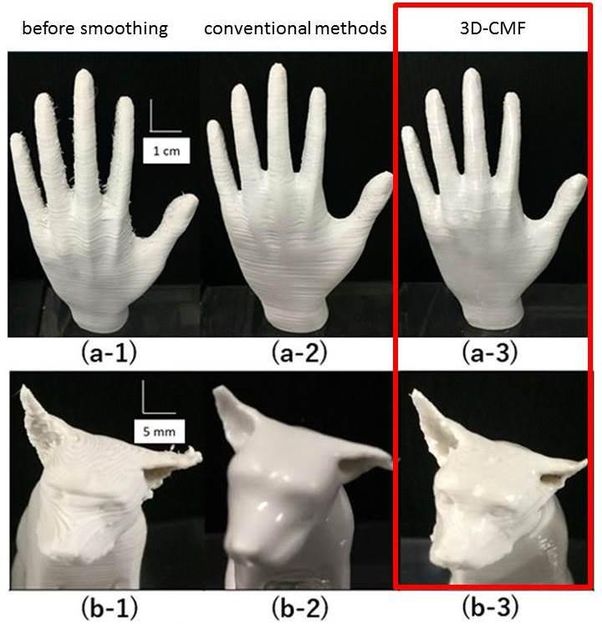
Visual comparison of printed surface before smoothing (1), with smoothing by conventional methods (2) and by 3D-CMF (3). CMF result (a-3) is more uniform than polishing (a-2), and CMF (b-3) accurately preserves more desired surface detail than solvent vapor method (b-2).
Waseda University
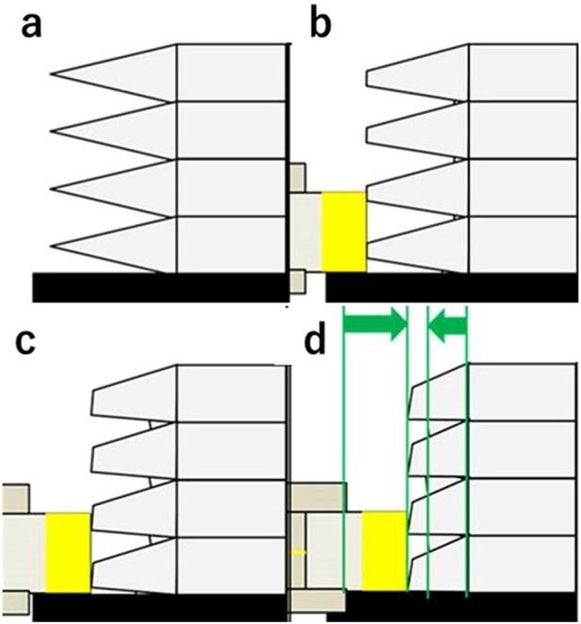
A shows a printed surface with no smoothing; B is first step using the pen to dissolve the high spots; C shows the progress as high spots are further reduced and dissolved material fills in low spots; D shows how high and low spots are improved to reduce elevation differences.
Waseda University
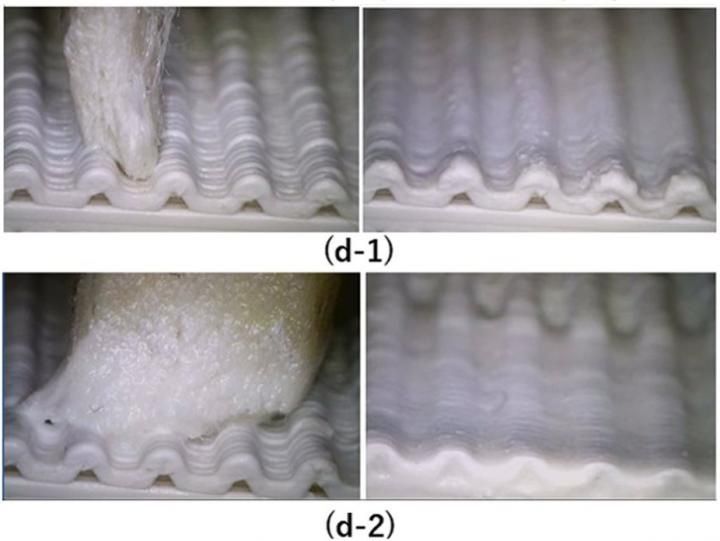
Visual result of changing solvent application p d-1 shows how better-fitting pen tip preserves intended surface detail for more accurate result than larger one (d-2).
Waseda University
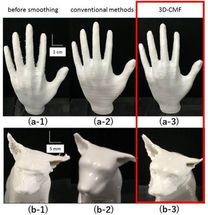
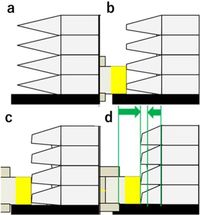
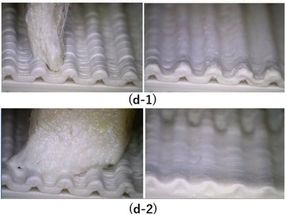
Kensuke Takagishi and Professor Shinjiro Umezu, both of the Waseda University Faculty of Science and Engineering, Department of Modern Mechanical Engineering, chose the Fused Deposition Modeling (FDM) type 3D printer, whose relatively low cost makes it most suited for in-home use, and addressed the issue of surface "ribbing," rough appearance due to grooves between layers of applied resin material.
One existing method for surface smoothing is polishing, or grinding down the high places to reduce the appearance of "ribs". However, the polishing devices add complexity and cost to the machine, and capture and disposal of the generated dust adds further complexity, making the whole machine impractical for household use.
Another existing method for finishing uses vaporized solvents to melt and smooth the surface of the printed piece. This method has the advantage of capturing some of the dissolved material in the bottom of the grooves, improving smoothness and structural integrity with less wasted resin; however complexity of the machine, indiscriminate dissolution of the entire surface, and handling of large amounts of flammable solvents are major issues.
The Waseda researchers developed and tested a method called 3D Chemical Melting Finishing (3D-CMF), which uses a tool like a felt-tip pen to selectively apply solvent to certain parts of the printed piece which require smoothing.
The new 3D-CMF method has major advantages over previous methods, which promise to move 3D printing into a much more attractive commercial position. 3D-CMF removes less material, creating less waste and achieving more precise shaping, and uses less solvent for better safety and lower cost. In addition, pen tips can be changed to further increase surface shaping precision.
Original publication
Other news from the department science

Get the chemical industry in your inbox
By submitting this form you agree that LUMITOS AG will send you the newsletter(s) selected above by email. Your data will not be passed on to third parties. Your data will be stored and processed in accordance with our data protection regulations. LUMITOS may contact you by email for the purpose of advertising or market and opinion surveys. You can revoke your consent at any time without giving reasons to LUMITOS AG, Ernst-Augustin-Str. 2, 12489 Berlin, Germany or by e-mail at revoke@lumitos.com with effect for the future. In addition, each email contains a link to unsubscribe from the corresponding newsletter.
